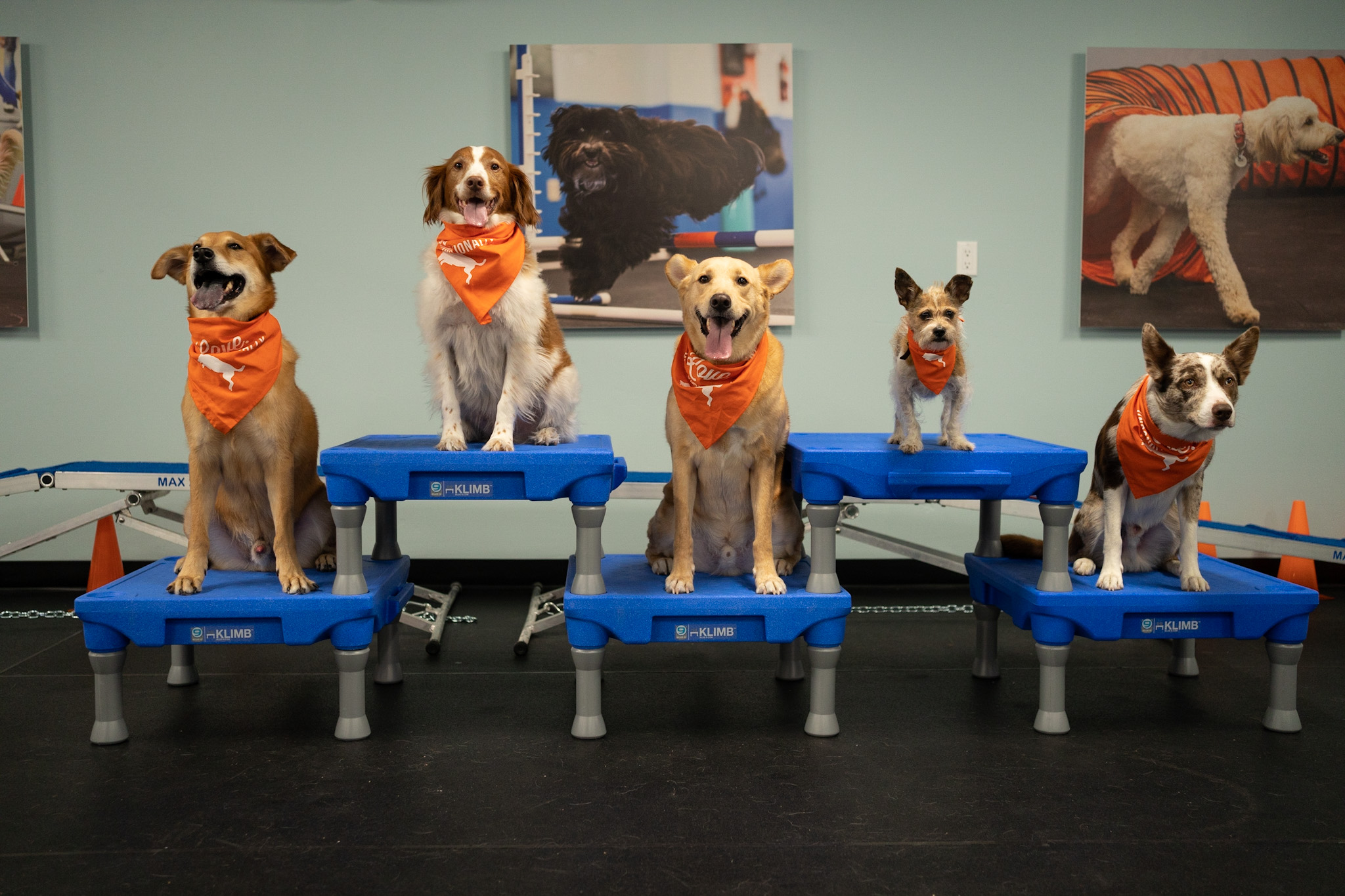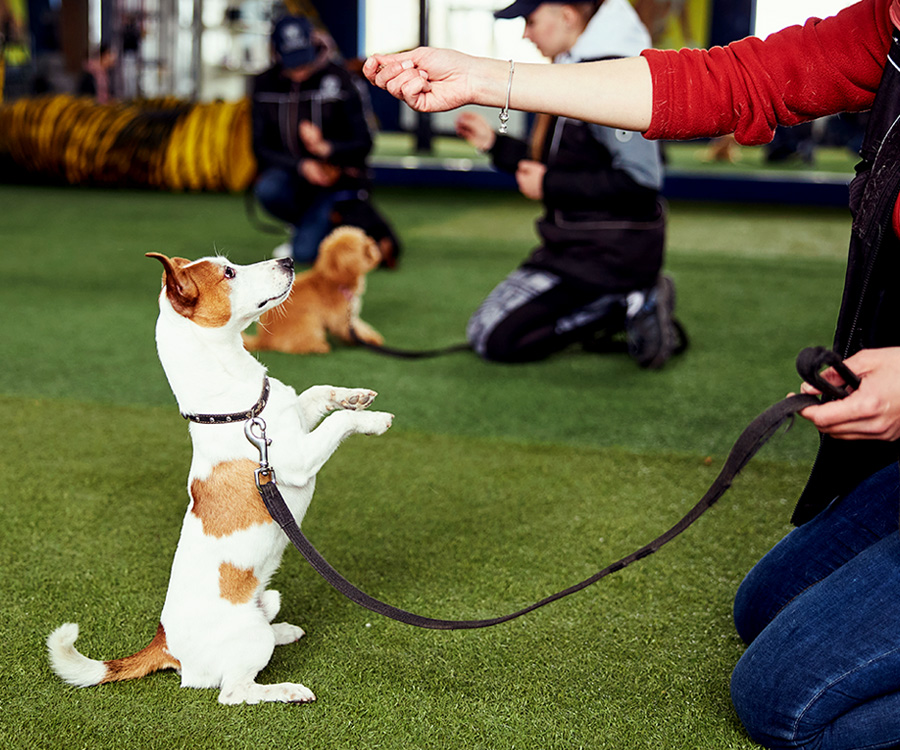Beginner's Guide to Successful Dog Training at Home
Effectively educating a dog at home calls for a nuanced understanding of canine actions and effective communication techniques. Establishing clear training objectives, making use of top notch rewards, and maintaining consistency throughout household participants are crucial aspects. Incorporating training into daily routines can improve both interaction and retention.
Understanding Pet Dog Habits
Comprehending canine actions is important for reliable training and cultivating an unified connection between human beings and their canine friends. Dogs communicate largely with body language, vocalizations, and facial expressions, making it vital for proprietors to interpret these signals accurately. Recognizing actions such as tail wagging, grumbling, or cring can give understandings right into a canine's psychological state and purposes.

Typical behavior issues, such as aggressiveness, anxiety, or too much barking, commonly originate from misunderstandings or unmet requirements. Observing and resolving these issues immediately can stop rise and guarantee a favorable training experience. By cultivating a deep understanding of pet dog behavior, owners can tailor their training approaches to suit their canine buddies, eventually resulting in a mannerly and contented pet.
Vital Training Devices
A well-equipped training area can substantially boost the effectiveness of pet dog training in your home. Crucial training devices ensure that both the pet dog and the fitness instructor can take part in productive sessions that promote learning and bonding.

Buying a durable chain and a comfy, well-fitting collar or harness is crucial for safety and control. These devices help develop limits and ensure the pet stays safe and secure during training. In addition, a designated training area, devoid of distractions, help concentration for both the pet dog and the fitness instructor.
Training aids such as training pads, cones, or agility tools can likewise boost the experience by presenting selection and challenges. Last but not least, having a notebook or electronic application for tracking progress can be invaluable, enabling you to note successes and locations for improvement. Utilizing these essential tools will certainly create a positive training atmosphere and lay the structure for effective discovering.
Developing a Training Regimen
Developing a constant training routine is important for reliable dog training in your home. A well-structured routine not just helps in strengthening wanted actions however additionally offers your pet dog with a complacency and predictability. To create an efficient training routine, start by recognizing specific training goals, such as basic commands, leash strolling, or house-breaking.
Pick a designated time each day for training sessions, ideally when your pet is sharp and responsive. Procedure should be short, approximately 5 to 15 minutes, to preserve emphasis and protect against exhaustion. Uniformity in timing and setting will certainly enhance your dog's learning visit this web-site experience.
Incorporate training right you could try here into daily activities to enhance abilities. For example, practice commands during strolls or nourishment, which incorporates learning right into all-natural routines. In addition, continue to be versatile and adjust the routine as necessary, suiting your pet's power degrees and state of mind.
Positive Support Strategies
Favorable reinforcement methods are basic to reliable pet training, promoting wanted habits through incentives instead than punishment. This approach uses favorable stimuli, such as deals with, praise, or playtime, to motivate canines to duplicate details activities. The foundation of this strategy is timing; rewards need to be offered instantly adhering to the preferred actions to produce a clear association.
When carrying out positive reinforcement, it is vital to pick benefits that are motivating for your pet dog. High-value treats, such as little items of hen or cheese, can be especially efficient during training sessions. Additionally, varying the benefits can keep your pet's rate of interest and enthusiasm.
Begin with straightforward commands, like address "sit" or "remain," and slowly development to more complicated jobs. Consistency is vital; guarantee that all household members make use of the same commands and benefit systems to stay clear of complication.
Furthermore, it is vital to stay person and avoid aggravation. Pet dogs, like human beings, learn at their own rate. By cultivating an encouraging training atmosphere via favorable support, you can boost your pet's discovering experience while enhancing the bond in between you and your hairy companion, preparing for effective training results.
Usual Educating Challenges
While training a pet dog in the house can be a rewarding experience, it typically features a collection of common challenges that can evaluate both persistence and uniformity. One common problem is distraction. Dogs may come to be easily sidetracked by noises, movements, or perhaps scents in their setting, making it tough to keep their emphasis during training sessions.
Another challenge is inconsistency in commands and reinforcement. It can prevent and perplex the pet progression if family participants use various signs or benefits. Establishing a unified method is crucial for reliable interaction.
Furthermore, dogs can experience aggravation or tension, especially if they do not understand what is anticipated of them. This can bring about undesirable actions, such as chewing or barking.
Ultimately, the timing of reinforcement is crucial (Dog training). Postponed benefits can decrease the performance of positive reinforcement, as canines may fail to connect the actions with the benefit
Getting rid of these challenges needs commitment, clear interaction, and a structured training strategy. Acknowledging and addressing these typical obstacles will certainly lead the way for a much more effective and satisfying training experience in the house.
Final Thought
In conclusion, successful pet dog training in the house requires a comprehensive understanding of canine actions and effective communication methods. By developing clear training goals and making use of premium treats alongside favorable support, the training process ends up being extra fulfilling for both the canine and the fitness instructor. Persistence, uniformity, and flexibility are important elements that assist in understanding. Ultimately, incorporating training right into day-to-day routines improves the bond between dog and proprietor, making the experience both pleasurable and productive.
Developing a regular training regimen is crucial for effective pet training at home.Favorable support methods are essential to effective pet dog training, advertising preferred behaviors through benefits instead than punishment (Dog training). By promoting a supportive training atmosphere with positive support, you can improve your pet's discovering experience while reinforcing the bond between you and your furry companion, laying the foundation for successful training results
In conclusion, effective pet training at home requires a comprehensive understanding of canine actions and efficient communication strategies. By developing clear training goals and making use of high-grade treats along with favorable reinforcement, the training procedure ends up being more gratifying for both the instructor and the pet dog.